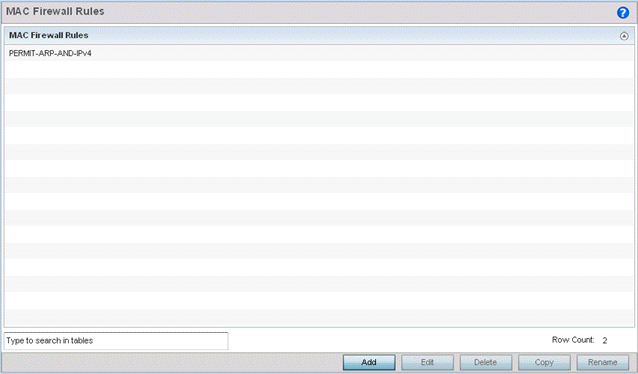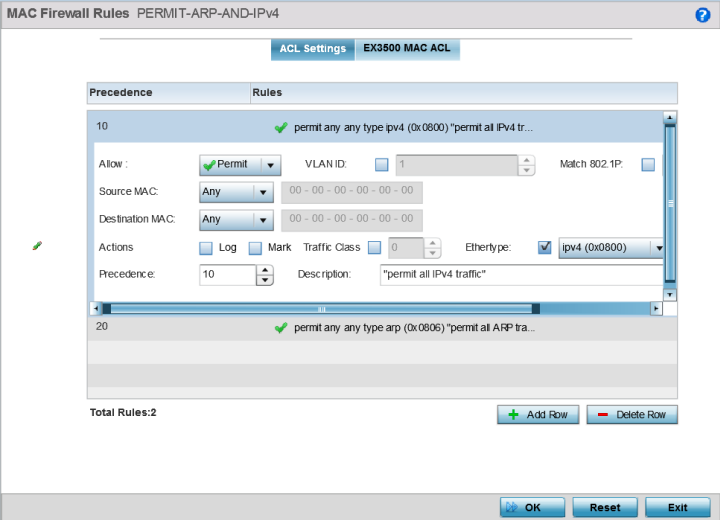| Allow |
Every MAC firewall rule is made up
of matching criteria rules. The action defines what to do
with the packet if it matches the specified criteria. The
following actions are supported:
- Deny - Instructs the firewall to
prevent a packet from proceeding to its destination.
- Permit - Instructs the firewall
to allow a packet to proceed to its
destination.
|
| Source and Destination MAC |
Enter both source and destination
MAC addresses. Access points use the source IP address,
destination MAC address as basic matching criteria. Provide
a subnet mask if using a mask. |
| Action |
The following actions are
supported:
- Log - Events are logged for
archive and analysis.
- Mark - Modifies certain fields
inside the packet and then permits them. Therefore,
mark is an action with an implicit permit.
- VLAN 802.1p priority.
- DSCP bits in the IP
header.
- Mark, Log - Conducts both mark
and log functions.
|
| Precedence |
Use the spinner control to specify
a precedence for this MAC firewall rule between 1 - 1500.
Rules with lower precedence are always applied first to
packets. |
| VLAN ID |
Enter a VLAN ID representative of
the shared SSID each user employs to interoperate within the
network (once authenticated by the local RADIUS server). The
VLAN ID can be from 1 - 4094. |
| Traffic Class |
Select this option to enable
filtering using Traffic Class. Use the spinner control to
specify a traffic class. Traffic class can be from 1 -
10. |
| Match 802.1P |
Configures IP DSCP to 802.1p
priority mapping for untagged frames. Use the spinner
control to define a setting between 0 - 7. |
| Ethertype |
Use the drop-down menu to specify
an Ethertype of either other, ipv4, arp, rarp, appletalk,
aarp, mint, wisp,ipx, 802.1q and ipv6. An Ethertype is a
twooctet field within an Ethernet frame. It is used to
indicate which protocol is encapsulated in the payload of an
Ethernet frame. |
| Description |
Provide a description (up to 64
characters) for the rule to help differentiate it from
others with similar configurations. |






